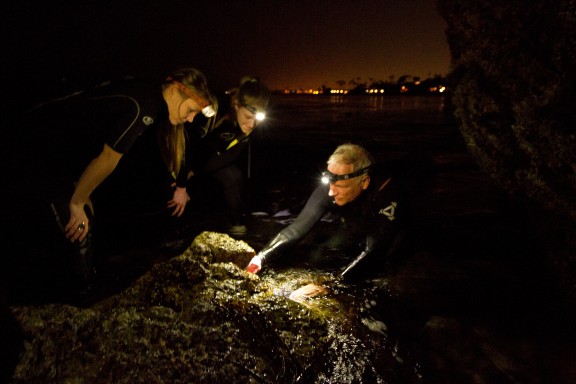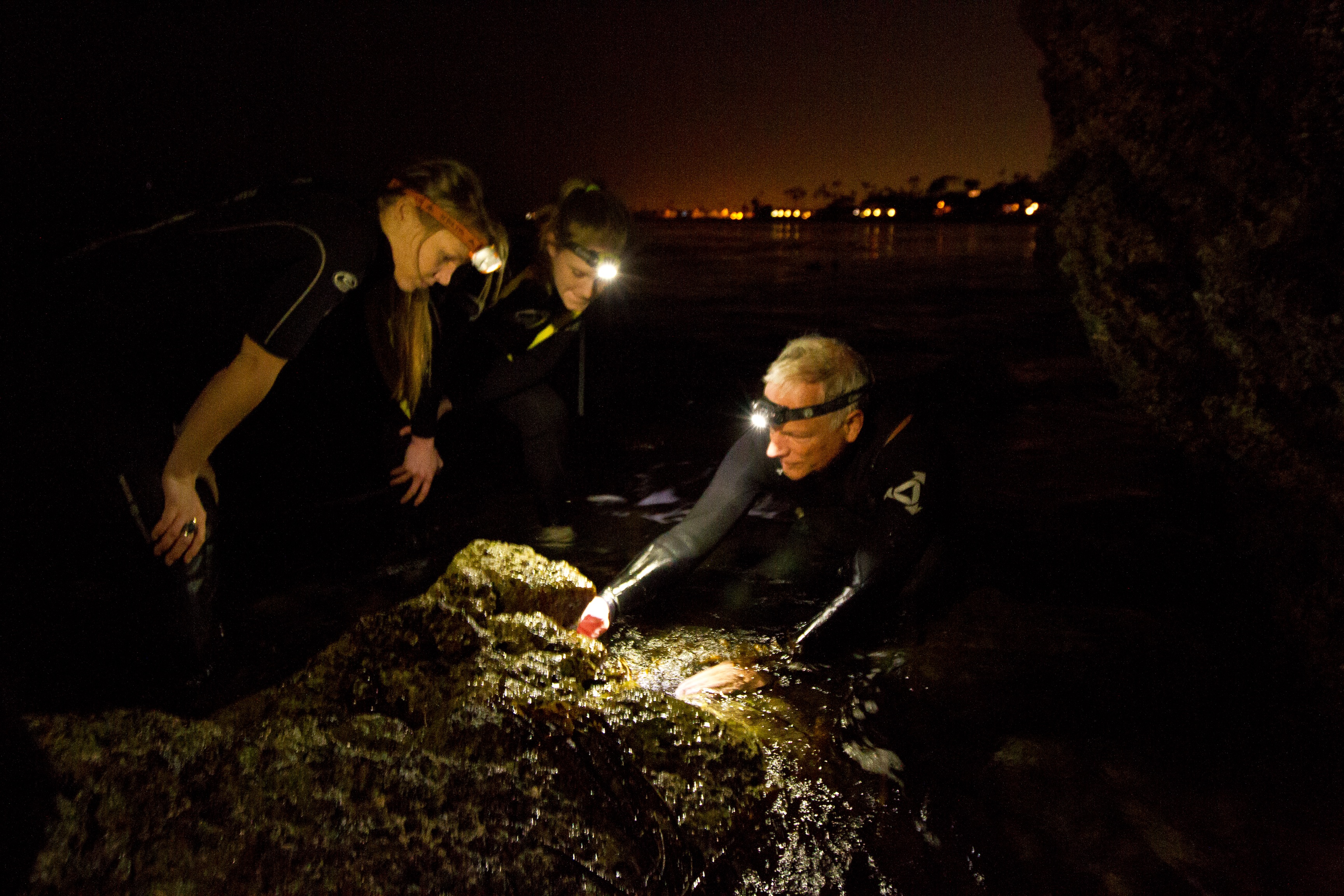What happens when a dance professor asks a marine biology professor if he cares to dance? Or to be specific, if he cares to participate in a project daring him to explain the essence of his Ph.D. dissertation by performing it in a dance production?
Incredibly, a captivating five-minute video that brings a creative view to the life, battles and territorial conflicts of – wait for it – limpets.
It all began when Robin Kish, assistant professor in the Department of Dance, was intrigued by the Dance Your Ph.D. contest sponsored by Science and The American Association for the Advancement of Science. The whimsical contest challenges scientists to loosen up the lab coats and explain the gist of their Ph.D. dissertations in a dance performance in which they appear. The performance must be posted online for judging and the opportunity to win the grand prize of seeing their creative masterpiece screened at TEDxBrussels.
“We have a lot of brilliant people on campus and I thought why not see if there are some faculty interested,” says Kish, who herself is widely published in the field of dance medicine.
Enter Bill Wright, Ph.D., associate professor in the Schmid College of Science and Technology. Kish asked if he’d be interested in “dancing” his early-career work exploring the territorial behaviors of owl limpets, small sea snails that cling along the wave-battered rocks of California’s intertidal zones. The basic question at the heart of his Ph.D research: How do limpets decide to fight or flee? Do they learn anything from their tussles with fellow limpets? How much does it shape their future behavior? It’s basic research that he continues today with his Chapman University students, who conduct regular field studies along the Orange County intertidal zone.
Wright said he’d meet with Kish and think about it. But when the two minds came together, the creative spark was ignited and Wright was hooked.

The result is “Bumper Cars in a Washing Machine,” an artsy dance piece choreographed by Kish and Department of Dance instructor Jenny Backhaus ’94 and performed by several Chapman dance students, along with Wright himself. In it Wright plays the observing scientist nudging the dancing limpets into territorial encounters, while a moody and slightly watery soundtrack plays in the background. The dancers replicate the limpet behavior Wright has observed and manipulated in the field.
Narration by Wright offers the in-a-nutshell explanation.
“It’s much harder to get your confidence back once you’ve lost it and we all know this already. But here we see it in an animal that is not like us. So, perhaps it is a universal truth,” he says at the video’s conclusion.
Alas, the limpet limbo didn’t win the 2012 competition, but Kish is undaunted. She’s on the hunt for another Chapman Ph.D. for a 2013 entry. And the experience did foster a winning insight of sorts for Wright.
“I was struck by how awkward the scientist was and how beautiful the limpets were,” he says. “And that’s exactly how science is in nature. We scientists are cumbersome and blocky observers. We’re inserting ourselves. It was a metaphor for nature in all its beauty and grace and us scientists looking at everything from the outside.”
Editor’s Note: Follow Chapman University’s Panther Productions and watch for an upcoming video in which the film crew tags along with Wright and students as they conduct limpet research along the shores of Laguna Beach.





Add comment